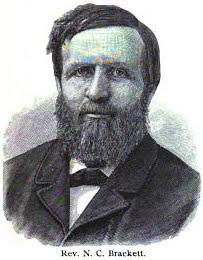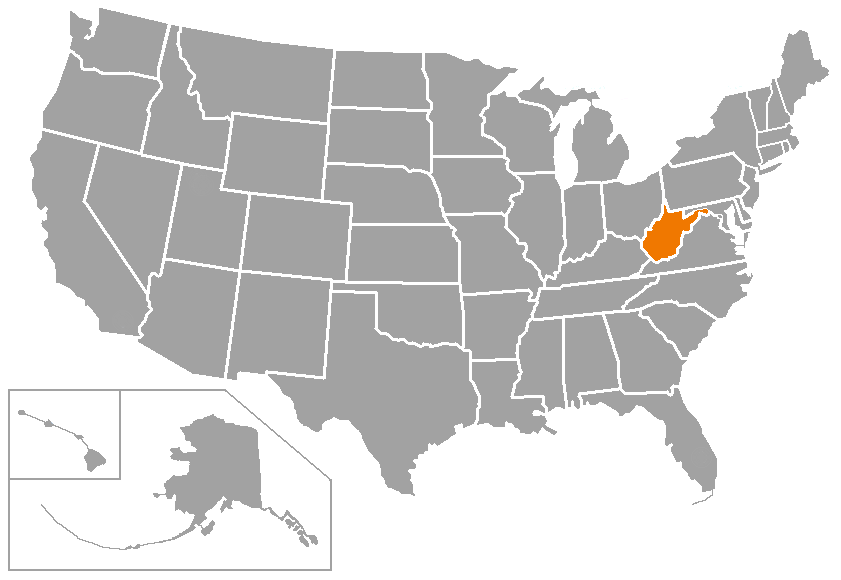|
Bluefield Colored Institute
Bluefield State University (Bluefield State) is a university in Bluefield, West Virginia that is an historically black university. It is a part of West Virginia's public education system and converted to a university in the summer of 2022. It added residential housing options that include double or single rooms with full meal plans. Bluefield State University is a member school of the Thurgood Marshall College Fund. History The Bluefield Colored Institute was founded in 1895 as a "high graded school" for African-American youth in the nearby area; at that time, the West Virginia Constitution prohibited "racial" integration in publicly supported schools, and until 1891, when West Virginia Colored Institute was founded, there was no education at the college level for African Americans in West Virginia (except at the private Storer College). It was located on a site in Bluefield, a city within 100 miles of 70% of West Virginia's Black citizens. The school began with 40 pupils ... [...More Info...] [...Related Items...] OR: [Wikipedia] [Google] [Baidu] |
Bluefield University
Bluefield University is a private Baptist university in Bluefield, Virginia. It offers 22 majors and is accredited by the Southern Association of Colleges and Schools. The campus is about from the state line between Virginia and West Virginia. It is affiliated with the Baptist General Association of Virginia. Bluefield University merged with Edward Via College of Osteopathic Medicine medical school system located at the campus of Virginia Tech in Blacksburg, Virginia. History Bluefield University was founded as Bluefield College in 1922 by the Baptist General Association of Virginia (BGAV), after residents of Bluefield offered to donate land and start-up funds.History R.A. Landsdell became the first president in 1920, and the current administration building is named Landsdell Hall in his honor. At ... [...More Info...] [...Related Items...] OR: [Wikipedia] [Google] [Baidu] |
Nathan Cook Brackett
Nathan Cook Brackett (1836–1910) was an abolitionist, Free Will Baptist pastor, first president of Storer College, and chairman and co-founder of Bluefield State College. Nathan Brackett was born in Phillips, Maine in 1836 and starting in 1857 attended Bates College (then called the Maine State Seminary) and then Colby College (then called Waterville College) and finally Dartmouth College for his senior year. After graduating from Dartmouth in 1864 and becoming ordained as a Free Will Baptist pastor, Brackett joined the U.S. Christian Commission in the Shenandoah Valley assisting soldiers and freed slaves. In 1865 the New England's Freewill Baptist Home Mission Society sponsored Brackett in establishing a primary school for former slaves and in supervising several dozen northern women from the North who were teaching in Free Will Baptist schools throughout the Shenandoah Valley. Also in 1865 Brackett married Louise Wood of Lewiston, Maine, who was also an 1860 alumna of Bates (M ... [...More Info...] [...Related Items...] OR: [Wikipedia] [Google] [Baidu] |
West Virginia Intercollegiate Athletic Conference
The West Virginia Intercollegiate Athletic Conference (WVIAC) was a collegiate athletic conference which historically operated exclusively in the state of West Virginia, but briefly had one Kentucky member in its early years, and expanded into Pennsylvania in its final years. It participated in the Division II ranks of the National Collegiate Athletic Association (NCAA), originally affiliated in the National Association of Intercollegiate Athletics (NAIA) until 1994, but held its final athletic competitions in spring 2013, and officially disbanded on September 1 of that year. Its football-playing members announced in June 2012 that they planned to withdraw to form a new Division II conference effective at the end of the 2012–13 season; this led to a chain of conference moves that saw all but one of the WVIAC's members find new conference homes. History The conference was rated as one of the oldest in intercollegiate athletics, dating back to its founding in 1924 by the West Vir ... [...More Info...] [...Related Items...] OR: [Wikipedia] [Google] [Baidu] |
United States Collegiate Athletic Association
The United States Collegiate Athletic Association (USCAA) is a national organization for the intercollegiate athletic programs of 72 mostly small colleges, including community/junior colleges, across the United States. The USCAA holds 15 national championships and 2 national invitationals annually. History In , the USCAA was founded as the National Little College Athletic Association (NLCAA), primarily to sponsor a national basketball tournament for small colleges and junior colleges. In the 1970s and through the 1980s, as the NLCAA, the USCAA began adding more sports. In 1989, the NLCAA changed its name to the National Small College Athletic Association (NSCAA). In 2001, the USCAA adopted its current name. Membership Sports The USCAA sanctions competition in eight men's and seven women's sports: Post–season national championships are held in all sports except football, which has few participating teams. Fall *Men's football * Men's and women's golf * Men's and wome ... [...More Info...] [...Related Items...] OR: [Wikipedia] [Google] [Baidu] |
NCAA Division II Independent Schools
NCAA Division II independent schools are four-year institutions that compete in college athletics at the NCAA Division II level, but do not belong to an established athletic conference for a particular sport. These schools may however still compete as members of an athletic conference in other sports. A school may also be fully independent, and not belong to any athletic conference for any sport at all. The reason for independent status varies among institutions, but it is frequently because the school's primary athletic conference does not sponsor a particular sport. Full independents Current members ;Notes: Former members Men's sponsored sports by school Departing members in pink. Women's sponsored sports by school Departing members in pink. Other sponsored sports by school *‡ — D-I sport Baseball independents Does not include all-sports independent teams that sponsor the sport (Bluefield State and Salem), since they have been listed before. Current member Fo ... [...More Info...] [...Related Items...] OR: [Wikipedia] [Google] [Baidu] |
National Collegiate Athletic Association
The National Collegiate Athletic Association (NCAA) is a nonprofit organization that regulates student athletics among about 1,100 schools in the United States, Canada, and Puerto Rico. It also organizes the athletic programs of colleges and universities in the United States and Canada and helps over 500,000 college student athletes who compete annually in college sports. The organization is headquartered in Indianapolis, Indiana. Until 1957, the NCAA was a single division for all schools. That year, the NCAA split into the University Division and the College Division. In August 1973, the current three-division system of Division I, Division II, and Division III was adopted by the NCAA membership in a special convention. Under NCAA rules, Division I and Division II schools can offer scholarships to athletes for playing a sport. Division III schools may not offer any athletic scholarships. Generally, larger schools compete in Division I and smaller schools in II and III. ... [...More Info...] [...Related Items...] OR: [Wikipedia] [Google] [Baidu] |
New River Community And Technical College
New River Community and Technical College (New River) is a public community college in Beaver, West Virginia. It was founded in 2003 and is West Virginia's newest college. The college was independently accredited in 2005 by the Higher Learning Commission. Although newly founded and named, the college's origins span more than one hundred thirty years of service to West Virginia through its two parent institutions, Bluefield State College and Glenville State College. History New River was created by combining the community and technical college component of Bluefield State College with Glenville State College's community and technical college campus in Nicholas County ( Summersville), as mandated by HB 2224 and later refined by SB 448. Consequently, New River serves an area including Fayette, Greenbrier, Mercer, Monroe, Nicholas, Pocahontas, Raleigh Raleigh (; ) is the capital city of the state of North Carolina and the seat of Wake County in the United States. It is t ... [...More Info...] [...Related Items...] OR: [Wikipedia] [Google] [Baidu] |
National Register Of Historic Places
The National Register of Historic Places (NRHP) is the United States federal government's official list of districts, sites, buildings, structures and objects deemed worthy of preservation for their historical significance or "great artistic value". A property listed in the National Register, or located within a National Register Historic District, may qualify for tax incentives derived from the total value of expenses incurred in preserving the property. The passage of the National Historic Preservation Act (NHPA) in 1966 established the National Register and the process for adding properties to it. Of the more than one and a half million properties on the National Register, 95,000 are listed individually. The remainder are contributing resources within historic districts. For most of its history, the National Register has been administered by the National Park Service (NPS), an agency within the U.S. Department of the Interior. Its goals are to help property owners and inte ... [...More Info...] [...Related Items...] OR: [Wikipedia] [Google] [Baidu] |
President's House, Bluefield State College
President's House, also referred to as Hatter Hall, is a historic home located on the campus of Bluefield State University at Bluefield, West Virginia. It was built in 1930 and named after President Hamilton Hatter, and is a brick, -story, Colonial Revival-style dwelling. It has one bay side wings and a hipped roof. Also on the property is a stone garage. The house was used as the residence for the college president until 1966. It was listed on the National Register of Historic Places The National Register of Historic Places (NRHP) is the United States federal government's official list of districts, sites, buildings, structures and objects deemed worthy of preservation for their historical significance or "great artistic v ... in 1999. References Houses on the National Register of Historic Places in West Virginia Colonial Revival architecture in West Virginia Houses completed in 1930 Bluefield State College Houses in Mercer County, West Virginia National Regi ... [...More Info...] [...Related Items...] OR: [Wikipedia] [Google] [Baidu] |
Hancock House (Bluefield, West Virginia)
The Hancock House, also known as the "Alpha House," is a historic home located at Bluefield in Mercer County, West Virginia, United States. It was built in 1907, and is a large, 2½-story frame dwelling in the American Foursquare style. It features a massive, very deep porch encircling the house on the front and side elevations and a porte cochere. The house was purchased by the Alpha Phi Alpha fraternity of Bluefield State College in 1962. It was listed on the National Register of Historic Places in 1990. See also * North American fraternity and sorority housing North American fraternity and sorority housing refers largely to the houses or housing areas in which fraternity and sorority members live and work together. In addition to serving as housing, fraternity and sorority housing may also serve to ... References African-American history of West Virginia American Foursquare architecture in West Virginia Bluefield State College Houses in Mercer County, West ... [...More Info...] [...Related Items...] OR: [Wikipedia] [Google] [Baidu] |
Hulett C
The Hulett was an ore unloader that was widely used on the Great Lakes of North America. It was unsuited to tidewater ports because it could not adjust for rising and falling tides, although one was used in New York City. History The Hulett was invented by George Hulett of Conneaut, Ohio, in the late 19th century; he received a patent for his invention in 1898. The first working machine was built the following year at Conneaut Harbor. It was steam powered, successful, and many more were built along the Great Lakes, especially the southern shore of Lake Erie to unload boats full of taconite from the iron mines near Lake Superior. John W. Ahlberg converted the Huletts in Conneaut to electricity in the 1920's. Substantial improvements were later made on the design by Samuel T. Wellman. The Hulett machine revolutionised iron ore shipment on the Great Lakes. Previous methods of unloading lake freighters, involving hoists and buckets and much hand labor, cost approximately 18¢/ton. U ... [...More Info...] [...Related Items...] OR: [Wikipedia] [Google] [Baidu] |




